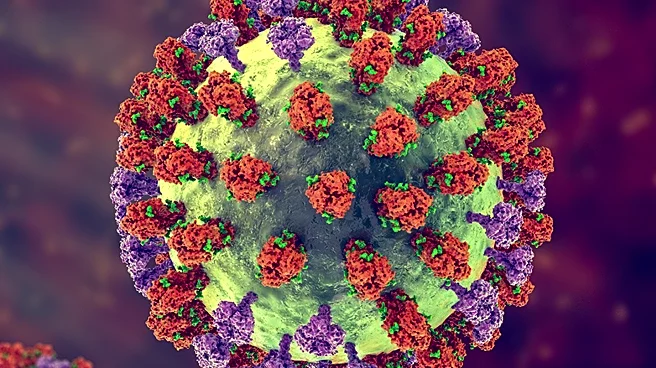What's Happening?
NanoViricides, Inc. is advancing its dual-track clinical development strategy for its broad-spectrum antiviral drug candidate NV-387. The company plans to conduct Phase II clinical trials targeting MPox
and various respiratory viral infections, including influenza, RSV, and coronaviruses. NV-387 has already completed Phase I trials, demonstrating safety and tolerability. The upcoming trials will be conducted in Congo for MPox and in India for respiratory diseases, with potential US trials to follow. The company aims to address unmet medical needs with its nano-polymer technology, which binds and destroys virus particles in the blood.
Why It's Important?
The development of NV-387 is crucial as it targets a wide range of viral infections, offering a potential solution to diseases with significant public health impact. The dual-track strategy allows NanoViricides to address both biodefense applications and common respiratory infections, potentially leading to substantial market opportunities. With estimates of a $2.6 billion market for RSV and $4.6 billion for influenza, successful trials could position NanoViricides as a key player in antiviral therapies. The company's innovative approach could enhance treatment options and improve patient outcomes.
What's Next?
NanoViricides is preparing for Phase II trials, with ethics approval already obtained for the MPox study in Congo. The company is also planning a basket-type trial in India for respiratory diseases, which could start in winter 2026. Successful trials may lead to focused US trials and potential development funding from the US biodefense agency. The company continues to develop other antiviral candidates, including NV-HHV-1 for shingles, and aims to expand its licensing agreements for additional viral targets.
Beyond the Headlines
NanoViricides' approach represents a shift towards using nanotechnology in antiviral treatments, offering a novel method to combat viral infections. The ethical considerations of using nanomaterials in medicine, along with regulatory challenges, will be important factors as the company progresses. The long-term impact on drug development and public health policy could be significant, potentially leading to new standards in antiviral therapies.












